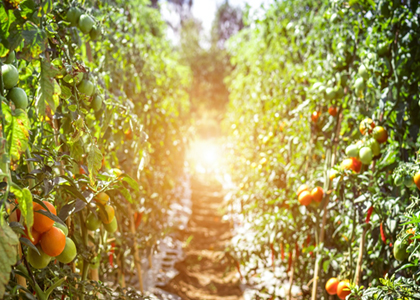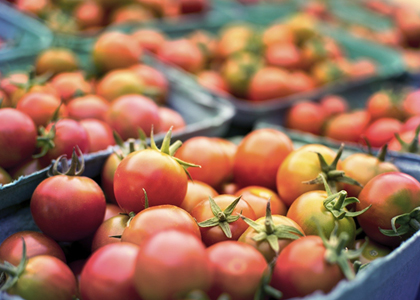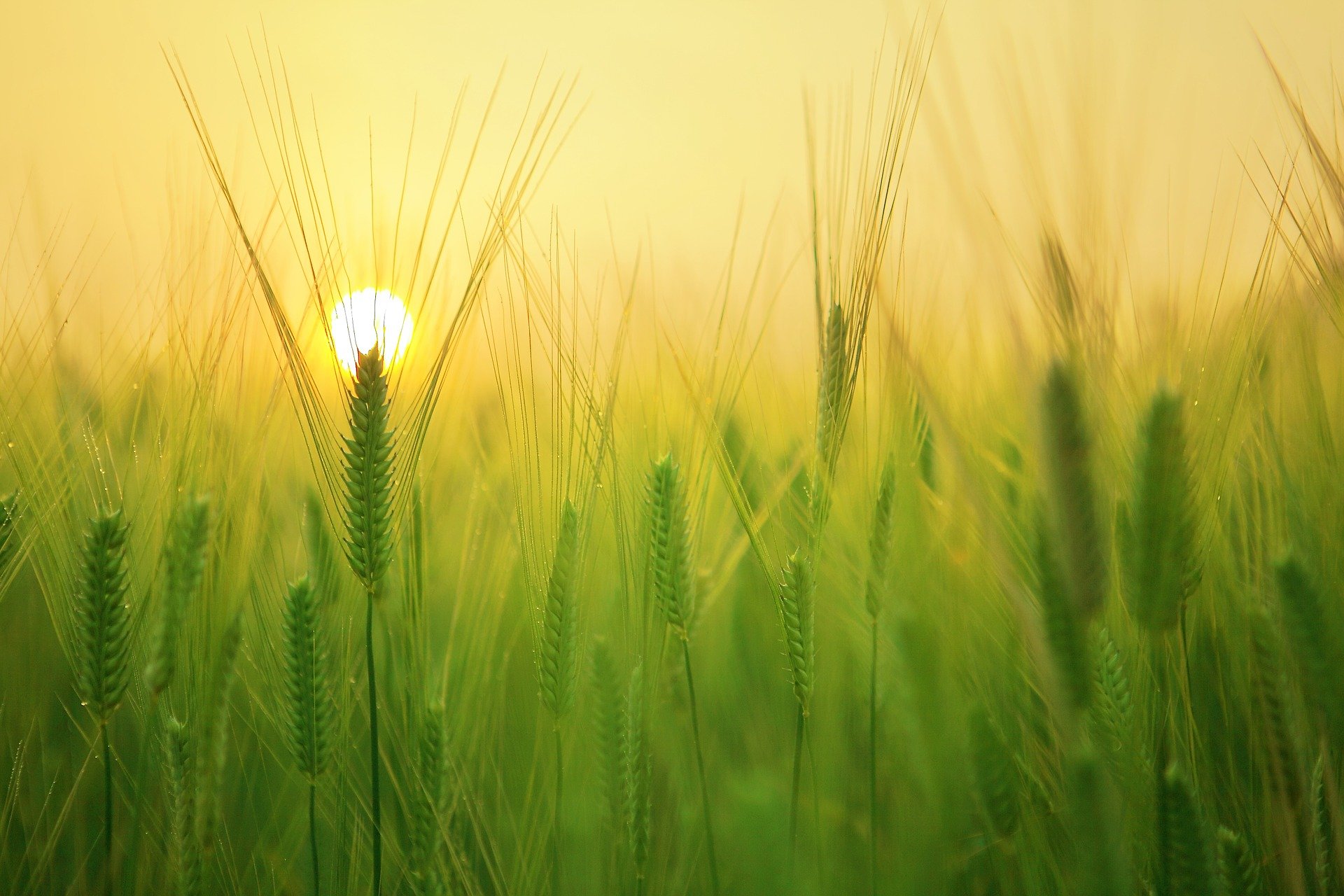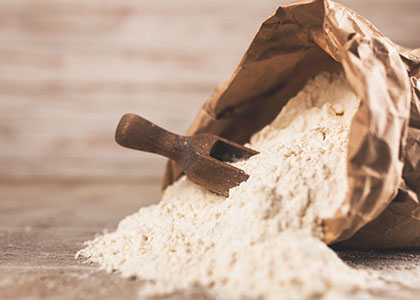Home / Blog / 5 Irrigation Solutions For Industrial Farming In Hot Climates
Summary
In hot, arid, and dry climates, irrigation is the main source of water for crops. This article discusses five micro-irrigation solutions that are being effectively used in the Middle East where natural water resources, like rain and reservoirs, are scant.
Micro, or drip irrigation, is a method of low-volume irrigation that is popular within the wider Gulf region. It is a localized form of irrigation, where water is distributed under low pressure through a piped network, in a pre-determined pattern. Drip irrigation systems deliver water through individual emitters, a subsurface drip delivery system, or through micro-spray/ micro-sprinklers.
Water is distributed through various methods that each have distinct advantages and disadvantages. In sprinkler or overhead irrigation, water is piped to one or more central locations within the field and distributed by overhead high-pressure sprinklers or guns. Some significant advantages of this type of irrigation include mobility and ease of access. Other systems include sub-soil methods.
Additionally, suggestions relating to desalination, the use of smarter, AI-assisted irrigation systems, and better monitoring are recommended for the future.
——
Index
An overview of industrial farming in hot climates
5 irrigation solutions for industrial farming:
1 Micro Sprinkler
2 sprinkler Irrigation
3 Irrigation by Wheel Move
4 Sub-irrigation
5 Subsurface Textile Irrigation
Analysis of Current Irrigation Methodologies and Suggestions for the Future
——
Under regular climatic conditions, agriculture can be almost effortless. However, in harsher climates, it becomes extremely difficult to conduct industrial farming on a large scale.
Within the Arabian Peninsula, summer temperatures reach as high as 55 degrees Celsius in places. On account of scant and irregular cycles of annual rainfall, agriculture is sustained through large-scale irrigation solutions.
An Overview of Industrial Farming in Hot Climates
While temperatures within the Arabian Peninsula are not conducive to agriculture, there has been considerable investment in the sector to raise it to an industrial level, with particular regard to certain foods. This is largely on account of countries within the Gulf, especially Saudi Arabia, shifting to agricultural practices that promote self-sufficiency while also preserving natural resources.
As global populations grow, so do the pressures on agriculture industries worldwide.
By 2050 there will be 60% more people on the planet, meaning that the demand for food will be higher than it has ever been before. And due to climate change, there will be fewer resources to make that food.
This means that any arable land on the planet within any country’s borders has to be cultivated to produce food – not just for its own population, but for people worldwide.
Characteristics of Sub Saharan Land:
- A hot and dry climate with low precipitation
- Sub-optimal, sandy soils with low fertility and high soil salinization
- Water scarcity for use across agriculture
- Limited varieties of climate-adapted seeds
- High incidence of animal diseases and agricultural pests
Efficient Use of Water for Agriculture
Despite technological advances, the use of more temperature-resistant seed varieties, and genetically modified organisms, the correct and timely irrigation of plants is still the most important factor in determining agricultural productivity.
Water needs to be regularly available for steady crop growth. However, in extreme environments, water is either inaccessible or completely absent.
In addition to revegetating soils in dry areas with little rainfall, timely irrigation helps with frost protection, effectively curbing weed growth and soil consolidation. Used with correct drainage methodologies, irrigation is the main source of water in the Middle East as natural water resources like rain and reservoirs are rare.
Irrigation Solutions for Industrial Farming
There are several methods of irrigation. They vary in how evenly, and how often water is supplied to plants. The two most popular irrigation methodologies applied to largescale industrial farming include:
• Surface irrigation: Employs the use of natural reservoirs and resources to distribute water through surface channels like canals. This kind of water distribution is only possible in areas with a reasonable amount of rain.
• Micro-irrigation: Often referred to as localized or drip irrigation, micro-irrigation is a method of low-volume irrigation that is popular within the wider Gulf region where water resources remain scarce.
Surface Irrigation in Hot Climates
As surface irrigation is only possible after periods of heavy rainfall that may result in flash floods of short durations, it is an irrigation method that is in limited use. Riverbeds are dry for the rest of the time. Part of the surface runoff percolates through the sedimentary layers in the valleys and recharges the groundwater, where some are lost through evaporation.
While almost all agriculture in hot, arid sub-Saharan areas is through irrigation, surface irrigation in some smaller-scaled farms is still practiced. These areas, however, are still additionally facilitated with irrigation.
Drip Irrigation in Hot Climates
Localized irrigation or trickle irrigation is a system where water is distributed under low pressure through a piped network, in a pre-determined pattern. Placed near a plant, the system distributes a small amount of water.
Drip irrigation delivers water through individual emitters, a subsurface drip delivery system, or through micro-spray/ micro-sprinklers. The idea is to apply the water to the plant as uniformly as possible, with minimal waste.

5 Irrigation Solutions for Industrial Farming in Hot Climates
1. Micro-Sprinkler
Micro-sprinkler or trickle irrigation functions by dropping water at the plant roots. Drip irrigation methods can range from very high-tech and computerized to low-tech and labor-intensive.
Advantages
- This method is considered highly water-efficient as evaporation and runoffs are minimized.
- The field water efficiency of drip irrigation is typically in the range of 80 to 90 percent when managed correctly.
- Drip irrigation systems reduce evaporation. In modern agriculture, drip irrigation is often combined with plastic mulch to further reduce evaporation loss.
- The system can be designed for uniformity throughout a field for precise water delivery to individual plants in a landscape containing a mix of plant species.
- The micro sprinkling drip irrigation system also doubles up as a means of effectively delivering fertilizer. The process is known as fertigation.
Disadvantages
- A micro-sprinkler irrigation system allows for deep percolation at the root level of a plant. This means that water does not effectively pass through pores in the soil.
- Water can get lodged below the root area if a drip system is operated for too long or if the delivery rate is too high.
- Lower water pressure is needed for delivery. This requires regular checking to ensure correct delivery amounts.
- High-tech irrigation-distribution solutions with computerized valves are available but are a costly alternative.
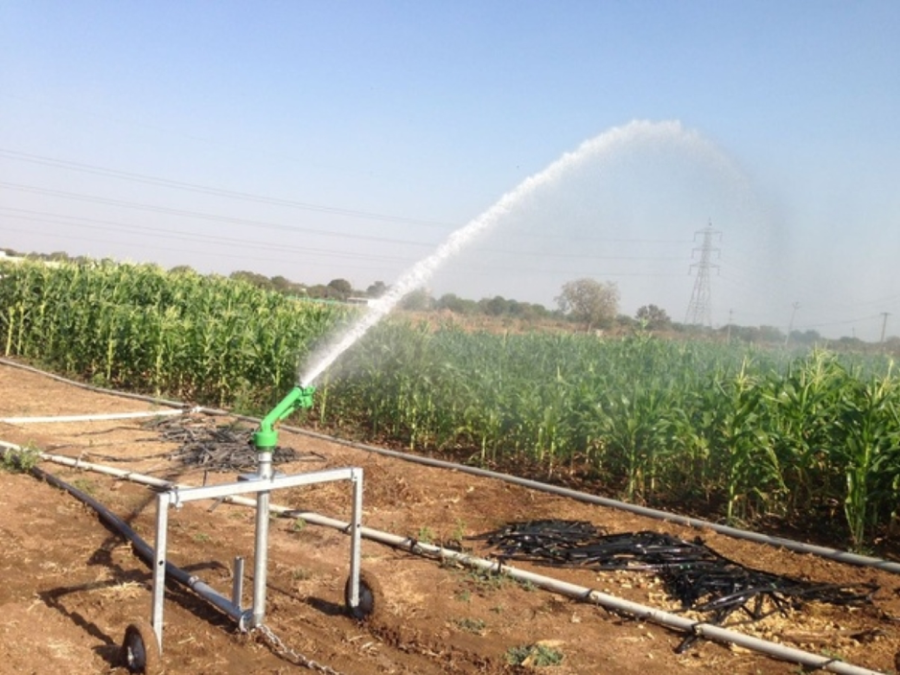
2. Sprinkler Irrigation
In sprinkler or overhead irrigation, water is piped to one or more central locations within the field and distributed by overhead high-pressure sprinklers or guns. A distribution system is installed on permanent bases (risers). These bases come in fixed and rotating options.
Advantages
- This kind of irrigation system uses high-pressure sprinklers that rotate. These rotors are driven by a ball drive, gear drive, or impact mechanism.
- Rotors can be designed to rotate in a full or partial circle, delivering through a wider circumference.
- Spray or sprinkler irrigation systems can also be mounted on wheeled systems with an attached high-strength hose providing the water.
- Traveling irrigation sprinklers can also be used extensively for dust suppression, irrigation, and land application of waste water.
- A new version of the sprinkler system is the center pivot irrigation that moves in a circular pattern that is fed water from a pivoting point in the arc.
- Center pivot systems also have drops hanging from a U-shaped pipe. Attached at the top of the pipe are sprinkler heads that can be positioned a few feet above the crop, thus limiting evaporative losses.
Disadvantages
- For larger, more powerful sprinkler systems, the bases need to be strong and mounted permanently, thereby curtailing mobility.
- Traveling sprinklers that are fitted with wheels use a length of polyethylene tubing wound on a steel drum and can only be used to irrigate smaller areas, like farms, sports fields, parks or pastures.
- While this kind of irrigation system can propel water across larger distances, it does not ensure even distribution.
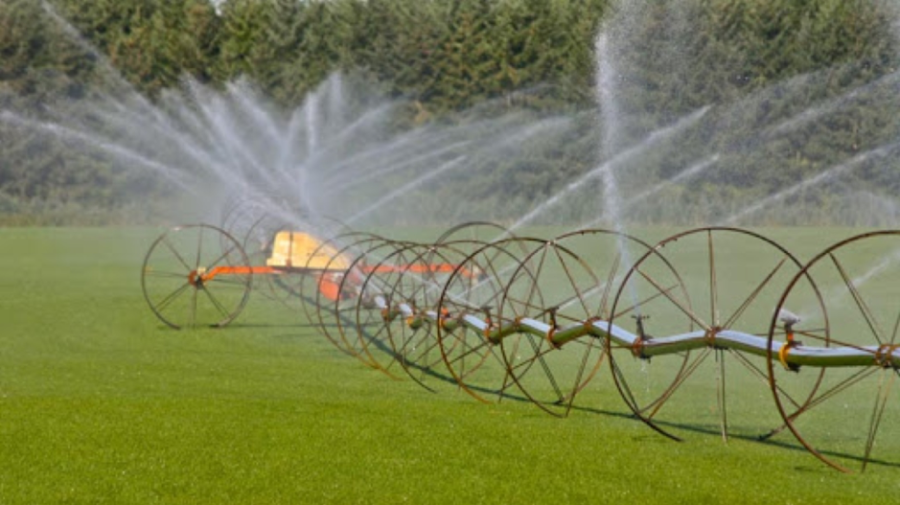
3. Irrigation by Wheel Move
Also known as a wheel line system, it is a series of pipes, each with a wheel of about 1.5 m diameters, permanently affixed to its midpoints, with sprinklers along its length. Water is supplied at one end using a large hose.
Advantages
- This system of irrigation allows for mobility. After irrigating a strip of land, the hose can be removed, water drained from the system, and the assembly rolled either by hand or with a purpose-built mechanism, for sprinkling in a different area.
- The system is less expensive to install than a center pivot.
- Another useful feature of a lateral move system is that it consists of sections that can be easily disconnected, adapting to field shapes.
- Useful in small, rectilinear, oddly shaped fields, hilly or mountainous regions, or in regions where labor is inexpensive.
Disadvantages
- Though cheaper than a center pivot, it is much more labor-intensive to operate, as it does not travel automatically and has to be moved manually.
- Water application is through a stationary strip which has to be drained and then rolled to a new area.
- Manual adjustment of individual wheel positions is sometimes necessary if the system becomes misaligned.
- Wheel line systems are limited in the amount of water they can carry, as well as limited in the height of crops that they can irrigate.
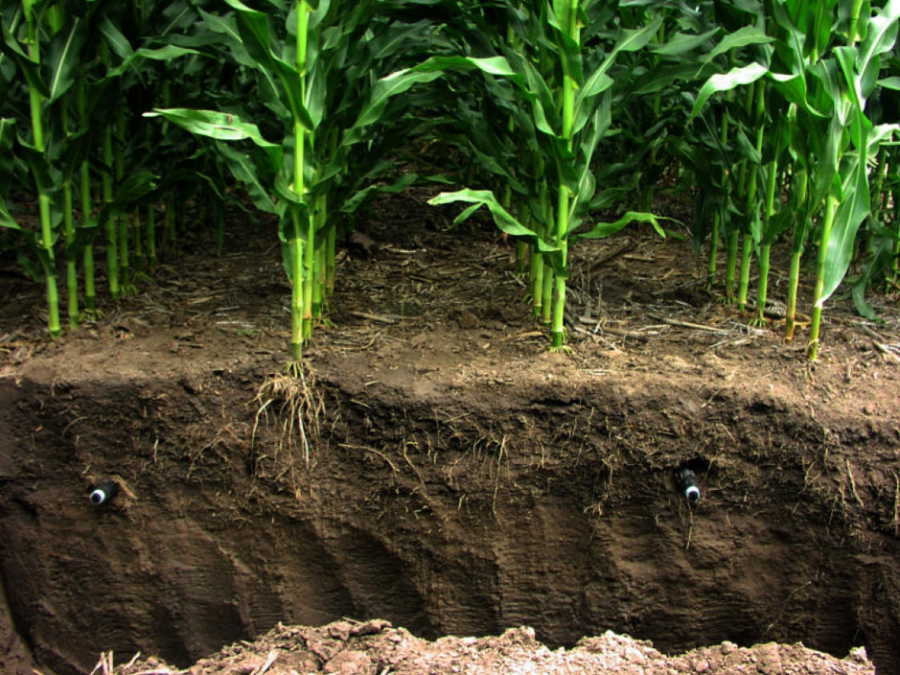
4. Sub-Irrigation
Sub-irrigation has been used for many years for field crops in areas with high water tables. It is a method of artificially raising the water table to allow the soil to be moistened from below the plants’ root zone.
Often those systems are located on permanent grasslands in lowlands or river valleys and are combined with drainage infrastructure. A system of pumping stations, canals, weirs, and gates allows it to increase or decrease the water level in a network of ditches and thereby control the water table.
Advantages
- Sub-irrigation is also used in commercial greenhouse production, usually for potted plants. Water is delivered from below and absorbed upwards, where the excess is collected for recycling.
- Allows for water and nutrient conservation.
- Allows for labor savings through reduced system maintenance and automation as it is similar in principle and action to subsurface basin irrigation.
- It frees up above-ground space. This can increase the number of crops produced and requires less equipment to manage.
Disadvantages
- Driving vehicles over a subsurface irrigation system will likely damage piping.
- Storage facilities for effluent (waste) must exist for extended periods of time when the ground for subsurface irrigation systems is wet or frozen.
- Wind obstructions may be necessary with a subsurface irrigation system to prevent off-site air transportation of effluent.
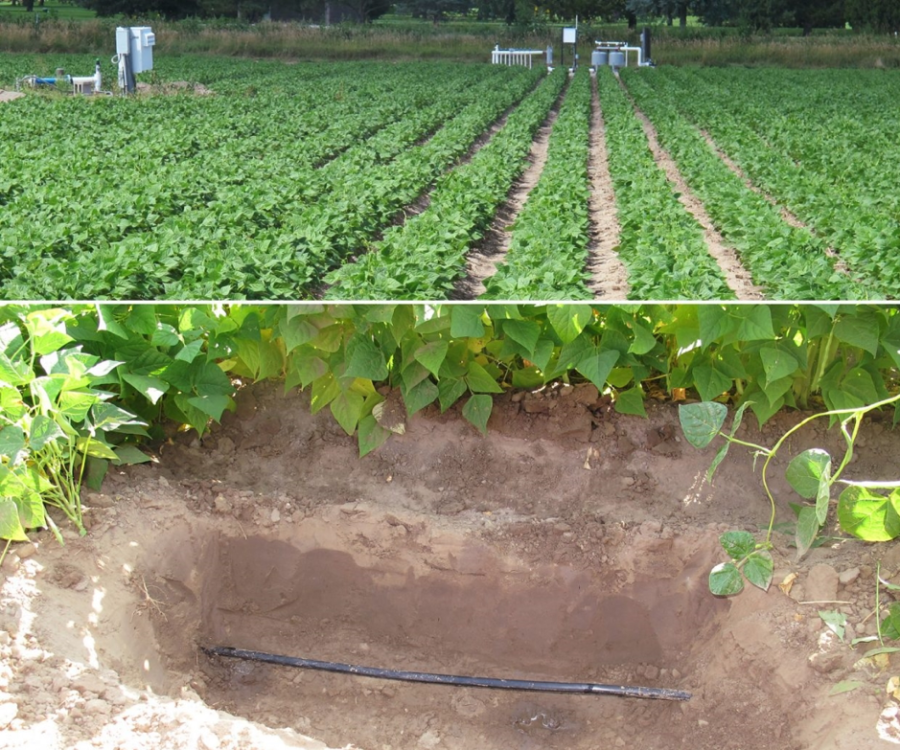
5. Subsurface Textile Irrigation
Subsurface textile irrigation (SSTI) is a technology designed specifically for sub-irrigation in all soil textures from desert sands to heavy clays. A typical subsurface textile irrigation system has an impermeable base layer (usually made of polyethylene), a drip line running along that base, a layer of geotextile on top of the drip line, and, finally, a narrow impermeable layer on top of the geotextile.
Unlike standard drip irrigation, the spacing of emitters in the drip pipe is not critical as the geotextile moves the water along with the fabric up to 2m from the dripper. The impermeable layer effectively creates an artificial water table.
Advantages
- SSTI is a relatively permanent solution if maintained properly. The components are inert and, given that they are situated below the ground, are not subject to the effects of weather, animals, machinery, vandals, or other terrestrial conditions.
- Allows for water savings of 50-75% compared with overhead systems.
- Low power requirements.
- Yields can be improved up to four times in certain crops as there is minimal root intrusion to drippers in the SSTI as there is a deflective tape on the top.
- No emitter blockage due to crusting.
- Minimal effect of evaporation.
- Weed growth is minimized because the water does not reach the surface. This system also allows for the efficient distribution of nutrients to the entire root zone.
Disadvantages
- Initial capital cost is typically more than overhead irrigation.
- Quality installation is critical. If mistakes are made, they are difficult to find.
- Regular maintenance is required to ensure the system does not break down or have internal leakages.
- Requires automated control and monitoring systems as a preferable operating mechanic (subsurface irrigation does not give any visual indicators to show if it is working or not).
- Additional, temporary overhead watering may be required to irrigate areas in hot climates.
- SSTIs do not have any built-in mechanisms to apply fertilizer or herbicides on the surface of the plant and this has to be additionally managed.
- Rodents may damage the system (although less than drip systems).
Analysis of Current Irrigation Methodologies and Suggestions for the Future
Irrigation in arid regions is affected, and will continue to be affected, by low water availability. Currently, a vast majority of the water used in agriculture applications is desalinated water.
Desalination
- In the Middle East alone, availability of brackish water from the Arabian Sea and Gulf constitutes an ideal resource for desalination. However, desalination is an energy-intensive process that requires optimization across various points:
- There is a huge amount of saline discharge, which can negatively affect groundwater and soil conditions.
- Waste effluents are recommended as an alternative to desalinated water, for reuse across agriculture.
- More efficient uses of irrigation systems need to be employed for enhanced water as current drip irrigation systems can be costly and inefficient.
Smart Irrigation
Smart irrigation systems use real-time measurements of soil conditions via satellites or soil probe sensors, which are then combined with data analytics and weather forecasts to regulate the amount of water that is delivered to the crops.
- This technology enables full control over water dosing and provides great insight on crop health status.
- Smart irrigation systems have the potential to increase water savings from 30% to 50%.
- Increase yields from 11% to 30%, compared to fields without irrigation management systems.
Advancements in Subsurface Irrigation
Subsurface irrigation using buried diffusers delivers water to plants at the root level, and is being used more effectively in trees, shrubs, and vegetables, both in open fields and greenhouses to better results.
- Used to keep trees alive during dry periods, the system has been used effectively in Tunisia to improve olive yields.
- The innovation can potentially decrease costs up to 30% and to reduce water usage by 30% compared with conventional irrigation systems.
Use of Growth Containers
Growth containers are special boxes with dedicated compartments for plant growth and water retention. Developed by in Europe, the container creates a water column under the plant by collecting irrigation water, dew and rainwater, and distributes it over a long period of time to minimize evaporation.
- Young transplanted plants can receive just enough shallow water at sufficient depths to develop a strong taproot, enabling resilience during prolonged drought periods.
- This approach is claimed to reduce 90% of water usage and costs, compared to traditional drip irrigation systems.
Farmers across hot climates are faced with multiple challenges in large scale agriculture. These include a decline in productivity, in terms of quantity and quality of crops, increased use of agricultural inputs, such as herbicides, insecticides and fertilizers, detrimental environmental effects, like soil drainage and soil erosion, leading to nitrogen leaching from the soil, and a reduction of crop diversity.
For more information on how to support agricultural projects, with farm equipment and advise, get in touch with Agri for the right solutions.



